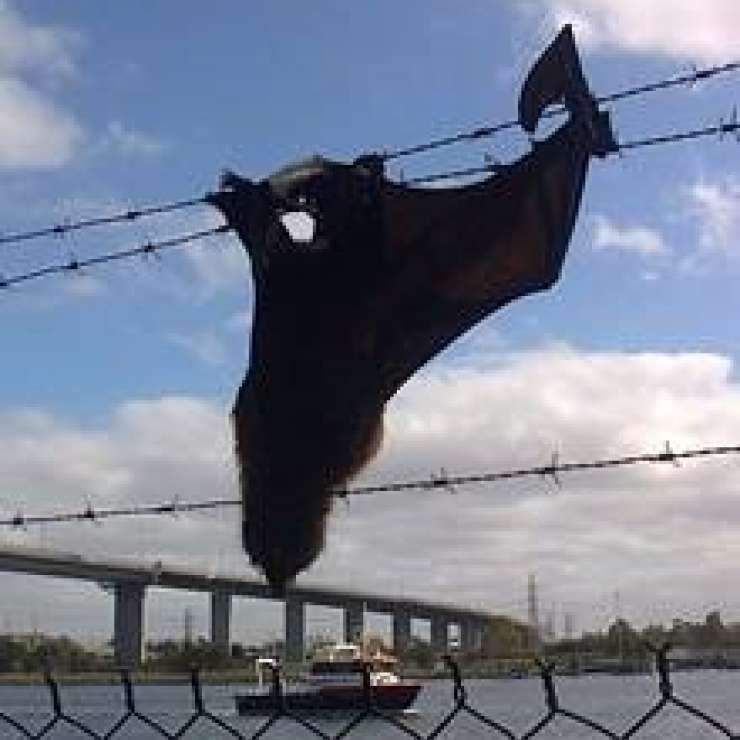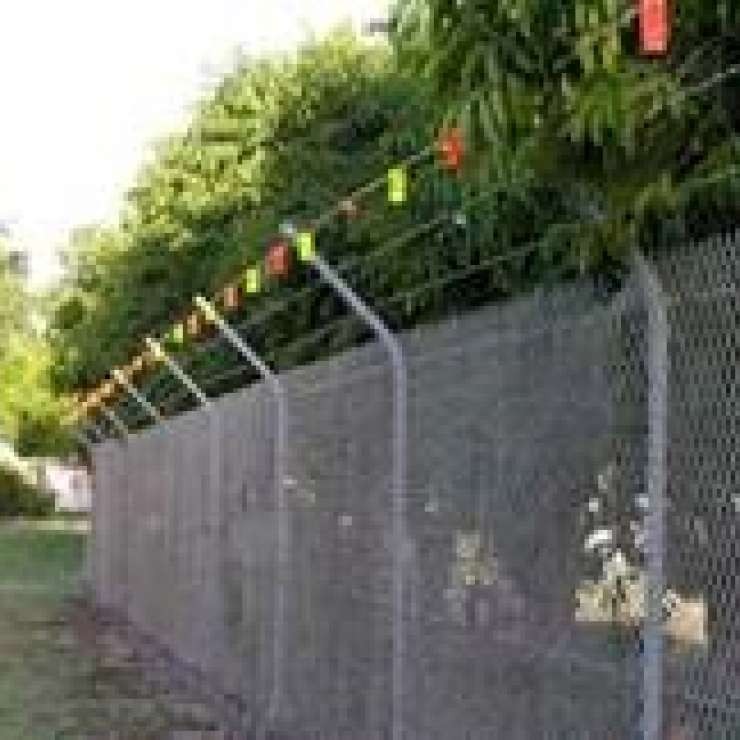Wildlife and barbed wire
Each year Wildlife carers rescue animals caught on barbed wire. Redundant barbed wire fences that no longer perform any security, farming, or agricultural purpose are a constant danger to wildlife.
Examples include:
- A barbed wire security fence runs on one side of a property only with the remaining boundary fences left open.
- A farm property that has two lines of fencing, with an old damaged barbed wire fence that is no longer used.
Barbed wire is invisible at night, in low-light or thick smoke. Animals simply hit them at speed and become trapped. The most lethal are triple strand high fences with nocturnal animals such as owls, gliders and flying foxes flying into them, causing severe injuries or death.
It is recommended that property owners:
- Conduct important hazard reduction work to save the lives of wildlife by identifying and removing barbed wire that is redundant or non-essential.
- Treat any remaining barbed wire every 600 mm with anti-strike deterrents such as orange/white tape, white cable ties or cloth strips, old CDs, or any bright objects that help animals see and avoid the wires at night. Nocturnal animals have good night vision and so even white cable ties will be visible to them. Making any barbed wire fencing visible will help all animals, including livestock (and humans) avoid fences and injury at night, in smoke, fog or low light.
- Always call Wildlife Victoria for entangled or injured wildlife.
- Consider excluding new high fence triple-strand barbed wire in the future. Research and consider other effective and safe security fence options available.
Information and photos courtesy of Friends of Bats & Bushcare Inc. (A Parks Victoria `Friends Of` Group)
Legislation for wildlife-safe fruit tree netting
Many native animals feed on flowering and fruiting trees in urban backyards, leading some people to protect their fruit by covering their trees with loose netting. Many don’t realise that this netting can be deadly to native wildlife including flying-foxes (also known as fruit-bats), birds, possums and small reptiles.
A person must only use netting with a mesh size no greater than 5mm x 5mm at full stretch to protect household fruiting plants. Failure to comply with this regulation could result in a fine under the Prevention of Cruelty to Animals Regulations 2019. The fine for using fruit netting that does not this specification will be $3303, and $660 for advertising or offering it for sale for household fruiting plants.
Wildlife-safe netting tips from Wildlife Victoria:
- Use only small aperture white netting, 5mm x 5mm or less. If single strand, 2mm x 2mm or less.
- Remove netting from trees once fruit has been harvested or is over-ripe.
- While using netting, check your trees daily to ensure no wildlife are entangled.
- Pick fruit early and leave your tree un-netted.
- Never throw netting loosely over trees – fix tightly to branches or tie onto trunk.
- Thirty percent block-out shade cloth can also be used. It’s wildlife-safe and will not stop fruit from ripening. You can also re-use it the following year.
- Consider netting selected branches with bags only rather than the entire tree.
Getting help quickly is critical for wildlife that has been caught in netting. If wildlife is entangled in netting, please do not try to handle or rescue the animal, but call Wildlife Victoria on 03 8400 7300.
For further information and photos of compliant netting, please visit the Agriculture Victoria or Wildlife Victoria websites.
Information courtesy of Wildlife Victoria




